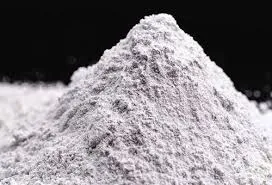
ធ្នូ . 24, 2024 14:05 Back to list
Latest HPMC Price Trends and Market Insights for 2023
Understanding HPMC Price Trends and Market Dynamics
Hydroxypropyl methylcellulose (HPMC) is a versatile chemical compound used in a variety of industries, including construction, pharmaceuticals, food, and personal care products. As a cellulose ether, HPMC plays a crucial role in enhancing the properties of materials, such as improving viscosity, providing a thickening agent, and acting as a stabilizer and binder. The price of HPMC has shown significant variability over the years, influenced by several factors, including raw material costs, market demand, production capacity, and economic conditions.
Factors Influencing HPMC Prices
1. Raw Material Costs The primary raw materials for HPMC production are cellulose and propylene oxide. Fluctuations in the prices of these inputs can directly affect HPMC prices. For instance, if the cost of cellulose increases due to supply chain disruptions or changes in agricultural practices, manufacturers may pass those costs onto consumers. Additionally, the price of propylene oxide is influenced by crude oil prices, which adds another layer of complexity to HPMC pricing.
2. Market Demand The demand for HPMC varies across different industries. In construction, for example, the growth of the global construction sector fuels the demand for HPMC due to its use in tile adhesives, plaster, and mortar. Similarly, in the pharmaceutical industry, the growth of the healthcare sector and the rising use of controlled-release drugs contribute to increased demand for HPMC. As these industries expand, so does the competitive landscape, impacting pricing strategies.
3. Production Capacity and Technological Advancements Improvements in production techniques and increased manufacturing capacity can lead to lower production costs, which may result in reduced HPMC prices. Conversely, if production facilities face operational challenges or if there is a lack of investment in capacity expansion, prices may rise due to limited supply. Additionally, technological advancements that improve efficiency can enable manufacturers to lower prices while maintaining profitability.
4. Economic Conditions and Trade Policies Global economic conditions play a significant role in determining HPMC prices. During economic expansion, robust demand can drive prices higher. However, during economic downturns, demand may weaken, leading to surplus supply and lower prices. Moreover, trade policies, tariffs, and regulations can impact international trade dynamics, affecting the availability and pricing of HPMC in different regions.
hpmc price

Future Outlook for HPMC Prices
Looking ahead, the HPMC market is expected to witness several trends that will influence pricing. The construction industry is projected to continue its growth trajectory, particularly in developing regions where urbanization is rapidly occurring. This trend is likely to sustain or increase demand for HPMC in construction applications.
Furthermore, the pharmaceuticals sector is also expected to propel HPMC consumption, given the rising demand for advanced drug formulations and the increasing prevalence of chronic diseases. As the healthcare industry embarks on more innovative formulations and personalized medicine, HPMC will remain a vital ingredient.
On the raw materials side, advancements in sustainable sourcing and increased availability of bio-based feedstocks may help stabilize raw material prices, positively impacting HPMC pricing. Additionally, circular economy strategies and environmentally friendly practices are becoming more prominent across industries; manufacturers adopting such practices may gain a competitive advantage, ultimately influencing HPMC pricing.
Conclusion
In summary, the prices of HPMC are shaped by a multitude of factors, including raw material costs, market demand across various sectors, production capacity, and broader economic conditions. As the global economy evolves and industries continue to innovate, the market dynamics surrounding HPMC are likely to change, prompting stakeholders to remain vigilant and adaptive in their pricing strategies. Understanding these influences will be crucial for buyers and manufacturers alike as they navigate the complexities of the HPMC market in the coming years. With the potential growth of the construction and pharmaceutical sectors, alongside sustainable production trends, the outlook for HPMC prices may see significant shifts, presenting both challenges and opportunities for industry players.
-
Versatile Hpmc Uses in Different Industries
NewsJun.19,2025
-
Redispersible Powder's Role in Enhancing Durability of Construction Products
NewsJun.19,2025
-
Hydroxyethyl Cellulose Applications Driving Green Industrial Processes
NewsJun.19,2025
-
Exploring Different Redispersible Polymer Powder
NewsJun.19,2025
-
Choosing the Right Mortar Bonding Agent
NewsJun.19,2025
-
Applications and Significance of China Hpmc in Modern Industries
NewsJun.19,2025







